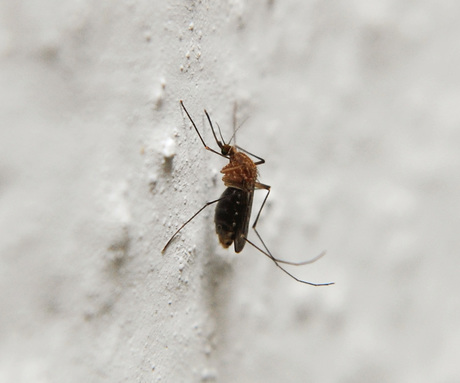Genomic analysis of malaria offers new insights

An international research team has performed the first large-scale genomic analysis of Plasmodium vivax malaria infections — analysis that has improved our understanding of how the malaria parasite evolves and could boost efforts to control the disease. Led by Professor Jane Carlton from New York University, the research has led to two complementary publications in the journal Nature Genetics.
While most malaria research has focused on the parasite Plasmodium falciparum, which is common in Africa, P. vivax is responsible for the majority of malaria infections outside this region, causing an estimated 15.8 million clinical malaria cases each year. However, it remains understudied because it is both less lethal than other species and because it has historically been difficult to analyse since it cannot be grown in the laboratory. Another challenge is separating the parasite’s DNA from human DNA.
The research team, which included scientists from Melbourne’s Walter and Eliza Hall Institute (WEHI), used cutting-edge genomic techniques to analyse 200 DNA samples of P. vivax collected from patients — the largest number of P. vivax genomes sequenced to date — in 11 countries, including Brazil, Colombia, India, Mexico, Myanmar, Papua New Guinea, Peru and Thailand. The scientists were able to separate P. vivax DNA from its human host by using a set of ‘sticky baits’ that captured the parasite DNA, enabling the human DNA to be washed away.
“Overall we found that the parasites are remarkably diverse,” said WEHI’s Professor Ivo Mueller. “The patterns of genetic diversity appear to both result from ancient human migrations and follow historical routes of human movement, including those associated with colonisation of the Americas in the 16th to 19th century and links between Africa, India and Europe.”
“The DNA data show that P. vivax has clearly had a different history of association with global human populations than other malaria parasites, indicating that unique aspects of its biology may have influenced the ways in which it spread around the world,” added Daniel Neafsey, associate director of the Genomic Center for Infectious Disease at the Broad Institute, who co-led the analysis.
The researchers found signs that the parasite population is continuing to evolve in response to recent factors such as drug treatment, with WEHI’s Dr Alyssa Barry saying, “Drug-resistant parasites are firmly established in certain regions, including Indonesia and Papua New Guinea, creating huge challenges for malaria control efforts. We found that parasites in these regions have strong genetic signatures of adaptation to antimalarial drugs.”
“Plasmodium vivax is going to be the last malaria parasite standing,” claimed Professor Carlton. “Our findings show it is evolving in response to antimalarial drugs and adapting to regional differences, indicating a wide range of approaches will likely be necessary to eliminate it globally.”
The researchers also examined parasite diversity within an individual, with Dr Barry noting, “Zooming in on individuals revealed that while some people are infected with a single strain of P. vivax, other people have more complex, mixed infections with multiple strains of parasites. Understanding the diversity of parasites both within an individual and around the globe is an important step towards understanding how malaria is transmitted and in the longer term finding new strategies to control this deadly disease.”
Mini lung organoids could help test new treatments
Scientists have developed a simple method for automated the manufacturing of lung organoids...
Clogged 'drains' in the brain an early sign of Alzheimer’s
'Drains' in the brain, responsible for clearing toxic waste in the organ, tend to get...
World's oldest known RNA extracted from woolly mammoth
The RNA sequences are understood to be the oldest ever recovered, coming from mammoth tissue...





